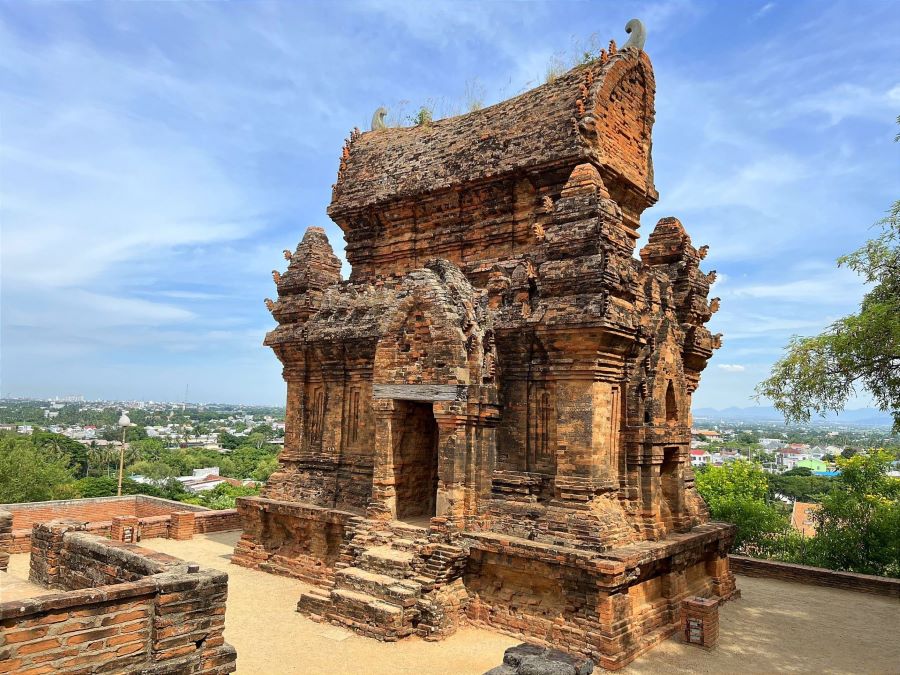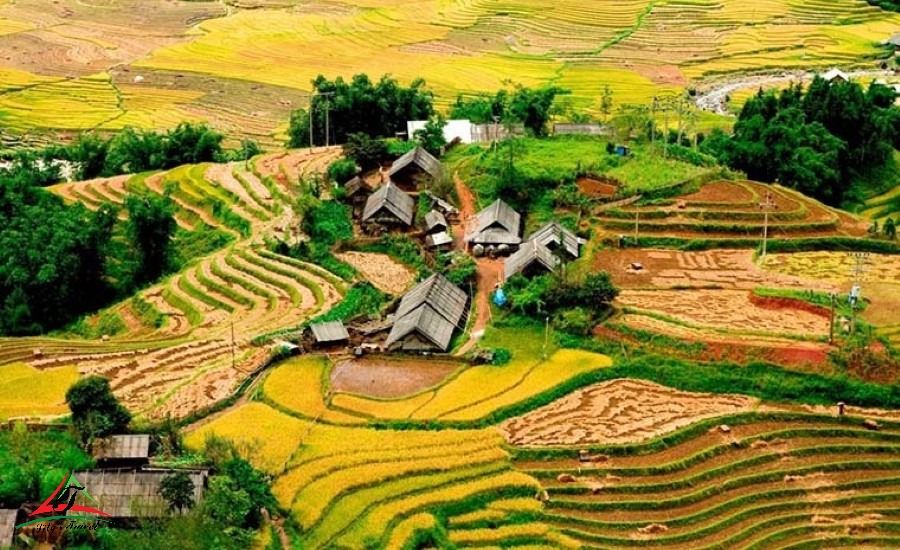Ho Chi Minh Mausoleum
When you step into Ba Dinh Square in Hanoi, the solemn grandeur of the Ho Chi Minh Mausoleum commands attention. This iconic site, home to the preserved body of Vietnam’s revered leader, President Ho Chi Minh, draws millions of visitors annually. Visiting the mausoleum during a travel to Vietnam will give you a profound glimpse into the country’s past and its enduring respect for “Uncle Ho.” In this guide, we’ll cover everything you need to know to plan your visit, the mausoleum’s rich history, practical tips, visiting rules, and must-see attractions nearby. Join us exploring one of Hanoi’s top landmarks.
Ho Chi Minh Mausoleum: Is it worth to see?
The Ho Chi Minh Mausoleum isn’t just a tomb. It’s a cultural and historical cornerstone of Vietnam. Located in the heart of Hanoi, it symbolizes the nation’s gratitude for President Ho Chi Minh, who led Vietnam to independence in 1945. The site attracts over 2 million visitors each year, from locals paying respects to international tourists eager to understand Vietnam’s story. Imagine standing in the vast Ba Dinh Square, where Ho Chi Minh declared the nation’s independence, feeling the weight of history around you. This guide ensures you’re prepared for a meaningful visit, with insights on what to expect, how to navigate the rules, and how to make the most of your time in this historic area.
The History of Ho Chi Minh Mausoleum
The Ho Chi Minh Mausoleum, located at 2 Hung Vuong, Ba Dinh District, Hanoi, is the final resting place of President Ho Chi Minh, affectionately called “Uncle Ho” by Vietnamese people. Built on the site where he read the Declaration of Independence on September 2, 1945, founding the Democratic Republic of Vietnam, the mausoleum holds immense significance. Unlike many world leaders, Ho Chi Minh requested modesty in death. He asked for his body to be cremated and ashes scattered across Vietnam’s north, center, and south. However, the Communist Party leadership chose to preserve his body, creating a lasting tribute.

In front of Ho Chi Minh Mausoleum.
In January 1970, Vietnam collaborated with Soviet architects, drawing inspiration from Lenin’s Mausoleum in Moscow. Construction began in February 1972 and was completed in just over three years. On August 29, 1975, the mausoleum was inaugurated, coinciding with Vietnam National Day celebrations. The structure, made of grey granite, exudes simplicity and strength, reflecting Ho Chi Minh’s humble yet resolute character. Its design blends Vietnamese cultural elements with Soviet-style architecture, standing as a testament to international solidarity during Vietnam’s post-war era.
For Vietnamese people, it’s a place of pilgrimage. Locals queue respectfully to honor Uncle Ho, whose leadership shaped modern Vietnam. For travelers, it’s a chance to connect with the nation’s history and witness its deep-rooted respect for its founder. The site’s historical weight and serene atmosphere make it a must-visit when exploring Hanoi.
Regulations when visiting the mausoleum of President Ho Chi Minh
Visiting the mausoleum requires adherence to strict regulations to maintain its solemnity. Here’s what you need to follow:
- Dress Modestly: Wear long pants or skirts and tops with sleeves. Avoid shorts, tank tops, or flip-flops.
- Bag Check: Deposit large bags at the security checkpoint. You may carry wallets, phones, and small cameras (turned off).
- Behavior: Stay quiet, avoid pushing, and follow the queue. Don’t touch walls or point inside the mausoleum.
- No Photography: Filming or photographing inside the room with Ho Chi Minh’s body is strictly prohibited.
- Hat Etiquette: Remove hats before entering and hold them in your right hand, facing outward.
- Respect the Space: No smoking, eating, or placing hands in pockets while inside.

You must walk in line and obey order when visiting Ho Chi Minh mausoleum.
Our suggestion: Arrive early to avoid long queues, especially on weekends. If you’re unsure about attire, bring a shawl or scarf to cover up. Non-compliance may result in being turned away, so make sure to plan ahead.
Visiting Ba Dinh Square and Nearby Attractions
Ba Dinh square
Ba Dinh Square, Vietnam’s largest public square, stretches in front of the mausoleum. Its vast lawns, reminiscent of traditional village yards, create a serene setting. A 1.4-meter-wide boardwalk weaves through the grass, leading to the national flagpole at the center. Don’t miss the daily flag-raising ceremony (6:00–6:30 AM) or flag-lowering at 9:00 PM, a proud tradition that draws crowds. The square has hosted historic events, from independence rallies to modern-day celebrations, making it a vibrant symbol of Hanoi’s spirit.

National Assembly Building of Vietnam in Ba Dinh Square.
Monument to Heroes and Martyrs
Across from the mausoleum, near the Imperial Citadel of Thang Long, this monument honors Vietnam’s fallen soldiers. Its open ceremony yard and three-tiered platform are ideal for reflection. The monument’s proximity to other landmarks makes it a quick yet meaningful stop.
Presidential Palace
A short walk away, the Presidential Palace dazzles with its French colonial architecture, originally built for the Governor-General of Indochina. After 1954, Ho Chi Minh worked here but chose not to live in its opulent halls, opting for simplicity. Today, the palace hosts official functions and is surrounded by lush gardens with century-old trees. Public access is limited, but the exterior is a fantastic photo spot.
The house on stilts
For a glimpse into Ho Chi Minh’s humble lifestyle, visit his stilt house, where he lived from 1958 until the end of his life in 1969. Designed in the style of Tay-Thai ethnic homes, this wooden structure features a spacious first floor and two upstairs rooms separated by a bookshelf. The surrounding garden, with its fishpond and mango trees, feels like a peaceful retreat. It’s a highlight for visitors seeking personal stories about Uncle Ho.

President Ho Chi Minh’s house on stilts.
Ho Chi Minh museum
Adjacent to the mausoleum, the Ho Chi Minh Museum houses artifacts, photos, and documents chronicling the leader’s life and Vietnam’s revolutionary history. Its exhibits, from Ho’s personal belongings to global tributes, offer context for his legacy. Allocate 1–2 hours to explore, and consider a guided tour for deeper insights.
Best Time to Visit and Ticket Information
Opening Hours
The hours for visiting Uncle Ho’s Mausoleum vary depending on the season. Visitors might consult the table below before visiting the Ho Chi Minh Mausoleum:
| Days | Hot season (April 1 – October 31) | Cold season (November 1 – March 31) |
| Monday | Closed | Closed |
| Tuesday | From 7:30 AM to 10:30 AM | From 8:00 AM to 11:00 AM |
| Wednesday | ||
| Thursday | ||
| Friday | Closed | Closed |
| Saturday | From 7:30 AM to 11:00 AM | From 8:00 AM to 11:30 AM |
Sunday |
Normally, the mausoleum is closed for two months each year for restoration, from mid-September to mid-November. The exact time varies from year to year. Visitors will be unable to visit the tomb during this renovation.

Ho Chi Minh Mausoleum and Ba Dinh Square on Vietnam National Day
Tickets
- For Vietnamese Citizens: Free admission.
- For foreign Visitors: 25,000 VND (~1 USD) per person.
Our tips: Tickets are purchased on-site. Arrive early (around 7:30 A.M) to secure yours, as queues can grow long by mid-morning. These morning visit offer shorter lines and cooler weather. Avoid weekends if possible, as they’re busier with local visitors.
Practical Tips for Your Visit
- Getting There: The mausoleum is a 10-minute drive from Hanoi’s Old Quarter. Use Grab bikes, taxis, or walk if staying nearby.
- What to Bring: Light clothing for Hanoi’s heat, but carry a scarf for modesty. Bring water and sunscreen for the queue.
- Accessibility: The site has limited wheelchair access; contact staff in advance for assistance.
- Nearby Dining: The area around Hung Vuong Street has culinary options worth exploring, from fine dining restaurants to traditional eateries. Try local pho or bun cha at eateries along this street, a short walk away.
- Photo Spots: Capture the mausoleum’s exterior or Ba Dinh Square’s flagpole for iconic shots.
Plan Your Hanoi Adventure
A visit to the Ho Chi Minh Mausoleum is a journey into Vietnam’s heart and history. Pair it with nearby attractions like the Temple of Literature or a food tour in the Old Quarter for a full Hanoi experience. For tailored itineraries and exclusive deals, explore our Vietnam tours to make your trip unforgettable. If you have visited the mausoleum, don’t hesitate to share your tips in the comments below, or check out our guides to Hanoi’s top sights for more inspiration!
FAQ
Start planning your tailor-made Vietnam tour by contacting one of our specialists…








its excellent as your other blog posts : D, thankyou for posting.